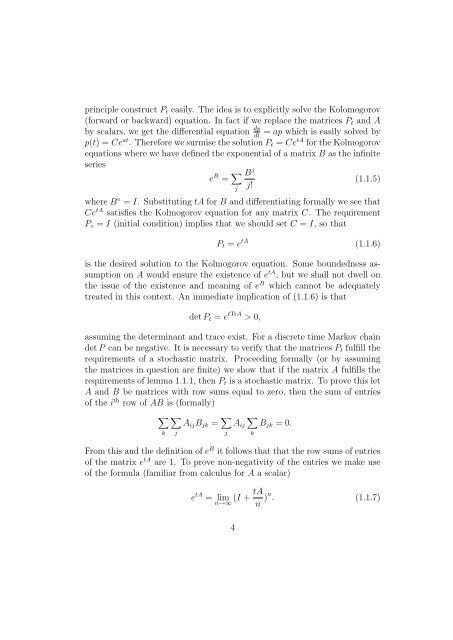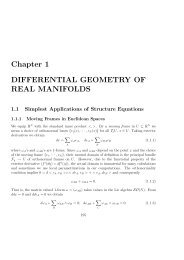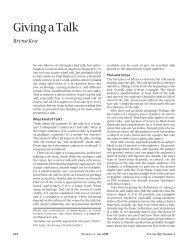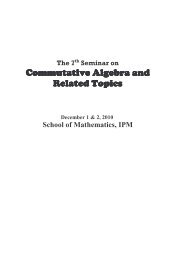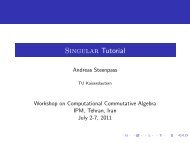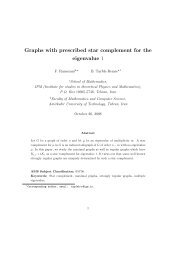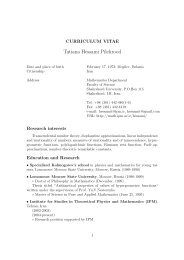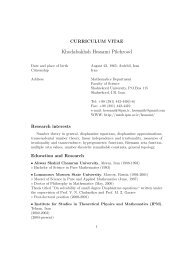1 Continuous Time Processes - IPM
1 Continuous Time Processes - IPM
1 Continuous Time Processes - IPM
Create successful ePaper yourself
Turn your PDF publications into a flip-book with our unique Google optimized e-Paper software.
principle construct Pt easily. The idea is to explicitly solve the Kolomogorov<br />
(forward or backward) equation. In fact if we replace the matrices Pt and A<br />
by scalars, we get the differential equation dp<br />
= ap which is easily solved by<br />
dt<br />
p(t) = Ceat . Therefore we surmise the solution Pt = CetA for the Kolmogorov<br />
equations where we have defined the exponential of a matrix B as the infinite<br />
series<br />
e B = <br />
j<br />
B j<br />
j!<br />
(1.1.5)<br />
where B ◦ = I. Substituting tA for B and differentiating formally we see that<br />
Ce tA satisfies the Kolmogorov equation for any matrix C. The requirement<br />
P◦ = I (initial condition) implies that we should set C = I, so that<br />
Pt = e tA<br />
(1.1.6)<br />
is the desired solution to the Kolmogorov equation. Some boundedness assumption<br />
on A would ensure the existence of e tA , but we shall not dwell on<br />
the issue of the existence and meaning of e B which cannot be adequately<br />
treated in this context. An immediate implication of (1.1.6) is that<br />
det Pt = e tTrA > 0,<br />
assuming the determinant and trace exist. For a discrete time Markov chain<br />
det P can be negative. It is necessary to verify that the matrices Pt fulfill the<br />
requirements of a stochastic matrix. Proceeding formally (or by assuming<br />
the matrices in question are finite) we show that if the matrix A fulfills the<br />
requirements of lemma 1.1.1, then Pt is a stochastic matrix. To prove this let<br />
A and B be matrices with row sums equal to zero, then the sum of entries<br />
of the i th row of AB is (formally)<br />
<br />
AijBjk =<br />
k j<br />
<br />
Aij Bjk = 0.<br />
j k<br />
From this and the definition of e B it follows that that the row sums of entries<br />
of the matrix e tA are 1. To prove non-negativity of the entries we make use<br />
of the formula (familiar from calculus for A a scalar)<br />
e tA = lim<br />
n→∞ (I + tA<br />
n )n . (1.1.7)<br />
4


